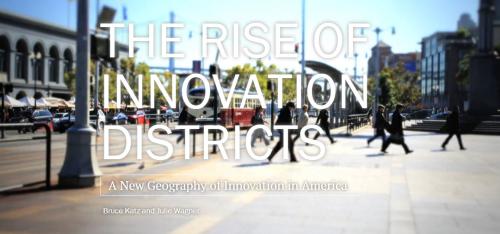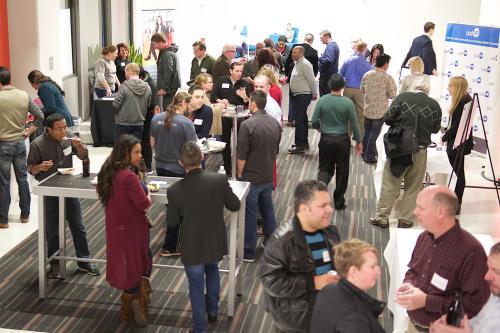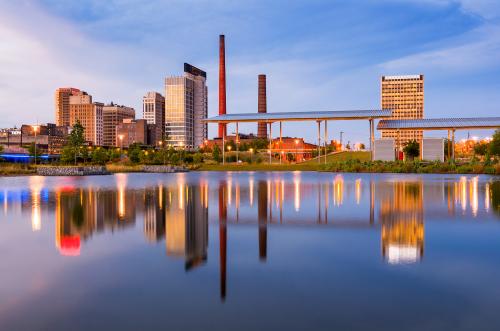Innovation spaces—buildings and interiors used in the innovation economy ranging from incubators to research institutes to innovation centers and start-up spaces—are growing significantly in cities and suburbs across the globe. In both the United States and Europe, for example, accelerators and incubators have more than doubled since the financial crisis. A new trend paper from the Brookings Institution’s Anne T. and Robert M. Bass Initiative on Innovation and Placemaking, “Innovation spaces: The new design of work”, finds that not only are these spaces proliferating, they are also changing to reflect the evolving collaborative, cross-sector, and high-tech nature of innovation.
Authors Julie Wagner and Dan Watch draw from nearly 50 in-depth interviews with global-reaching and local-serving architects and innovation space managers to analyze the continuum of modern innovation-oriented workspaces. They find the role of well-designed innovation spaces in improving firm competitiveness, company culture, and the formulation of new products and ideas, offers important lessons for companies, universities and other drivers of the innovation economy on how to re-imagine space given three major trends in modern innovation:
- Economic innovation is increasingly open and collaborative: In response, architects are applying creative spatial strategies to stimulate both mixing (of people and disciplines) and collaboration (between people and across disciplines).
- Collaboration-centric work and worker preference are revaluing face-to-face communication: The most successful innovation spaces recognize collaboration’s linguistic, technical, and organizational challenges, and, in response, design buildings and rooms that encourage face-to-face communication, collaboration, and ideation.
- Technology is increasingly ubiquitous in the workplace with innovation spaces witnessing a particularly pronounced infusion of tech over the last 10 years: Given the velocity of technological change, innovation spaces are becoming “social test beds” in their pursuit to balance technological power, organizational ambition, and human needs.
Surveying a range of innovation spaces, Wagner and Watch detail best practices for industry leaders, managers, and architects interested in designing and programming people-first and collaboration-focused spaces.
In the past, designers and organization leaders often privileged aesthetics over function and built fixed physical boundaries between industries, organizations, and individual workers. Today, Wagner and Watch’s research shows, the most successful innovation spaces prioritize flexibility and proactively provide opportunities for collaboration.
The paper also finds that as traditionally separated sectors increasingly intermingle and technology becomes a platform for most disciplines, this new convergence economy is influencing spatial design. Successful innovation spaces now must be flexible locales where separate professions and disciplines can easily converge. Whether a scientific lab designed to accommodate multiple disciplines, a co-working campus intermixing various companies, or new structures built to commingle industry and university researchers, many of the most successful innovation spaces are designed to facilitate and encourage cross-sector collaboration.
Wagner and Watch conclude that employers, economic development professionals, city leaders, and, ultimately, designers should recognize the importance of innovation spaces and intentionally design them into functional catalysts for innovation, and not simply ‘cool’ spaces. Those spaces designed with people and collaboration in mind not only bring innovative aesthetics, but also contribute to the modern economy and the strength of the communities in which they reside.








